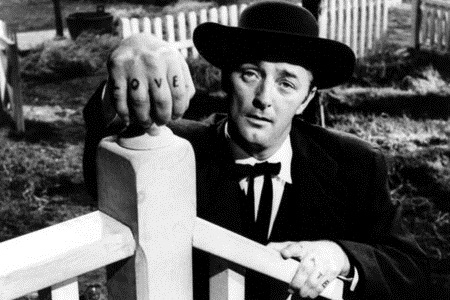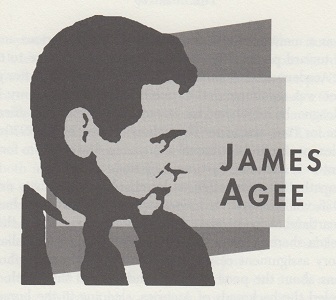Born: November 27, 1909, Knoxville, TN
Died: May 16, 1955, New York, NY
I am of the Agee-an school of criticism, considering it a conversation between moviegoers.
—Judith Crist
Though remembered as the most influential film critic of all time, James Agee was originally a poet. He grew up in Tennessee’s Cumberland Mountains but was sent to various Appalachian boarding schools and seminaries following the untimely, accidental death of his father. In an effort to deal with feelings of isolation and abandonment, Agee channeled his emotions through a rigorous writing habit, which developed his rare gift for penetrating prose. His intelligent, passionate views later found a place in critical essays throughout the 1940s, and his reviews of contemporary films made him famous among moviegoers. He developed a loyal readership, and his deeply personal and insightful opinions forged a solid vocabulary for a new generation of film buffs. His aesthetic standards later became the basis for European film criticism, and echoes of his colorful style surfaced again and again in film-related newspaper columns and television shows of the 1960s and 1970s. His poetic language produced the finest examples of film criticism and inspired other writers, including Pauline Kael, Rex Reed, Roger Ebert and Janet Maslin to devote themselves to the appreciation of film.
Agee’s writing showed promise from an early age. While still a boy in Tennessee, he developed a close relationship with a Jesuit priest, Father Flye, who served as a mentor and guided the intellectually curious and creative young pupil toward poetry. Flye helped Agee gain entrance to the prestigious Exeter Academy and eventually to Harvard University. After graduating in 1932, Agee was recommended to publishing magnate Henry Luce by a Harvard colleague; he hitchhiked his way to Luce’s New York offices and was hired to write for Time magazine. Throughout the rest of the 1930s, he wrote feature articles, poetry and occasional anonymous film criticism for a number of Luce’s ventures, including Fortune magazine.
Agee’s empathetic nature often undermined his objectivity as a feature writer. In 1936, while assigned to a Fortune feature about small businesses in America’s heartland, Agee turned in an overlong report about the plight of poverty-stricken sharecroppers throughout Tennessee and Alabama. However, the story assignment resulted in a collaboration with photographer Walker Evans about the poor working conditions in the South. Agee and Walker traveled the backroads of America, sleeping in the homes of their subjects and documenting their family histories in words and pictures. These reports for Fortune led to a book, Let Us Now Praise Famous Men (1941), a compilation of Evans’s photographs accompanied by Agee’s reactions in text. The book became a milestone of photojournalism and one of Agee’s best-known works; it also launched a close friendship between Walker and Agee that would last throughout their lives. Shortly thereafter, Agee wrote “Knoxville: Summer of 1915,” a brief essay for the fledgling publication Partisan Review about his childhood experiences; it became the precursor to a novel, A Death in the Family (1957), that garnered huge acclaim and is widely considered a literary gem.
In 1938, The Nation published his first movie critiques, which were immediately noticed as something quite different from standard theatrical reviews. Agee judged film as art, taking exception to the idea that it was a commercial product and therefore understandably compromised by the whims of its public. He considered film a serious medium and held its directors up to praise and ridicule in his eloquent criticism. The beauty of his prose and the fierce convictions behind his writing won over fans who were looking for a rigorous, academic approach to studying the “art” of filmmaking. He encouraged film lovers to patronize only those movies that aspired to the highest standards and to view their favorite directors with a discerning eye. When he wrote the famous line “There are few men whose eyes I would trust as I do my own,” he coined the catchphrase of film buffs who looked at film through a critical lens.
Some felt his deep love of the movies compromised his objectivity; Agee often suggested his own creative fixes for films, and he defended his favorite directors to a fault. Charlie Chaplin’s Monsieur Verdoux failed to bring in the box office receipts usually associated with a Tramp picture, but Agee praised the film for years after its disappointing release. At other times, his words dripped with sentiment; in describing Buster Keaton’s stone-faced mug, Agee gushed: “Almost with Lincoln’s as an early American archetype, it was haunting, handsome, almost beautiful.” In a 1949 essay, “Comedy’s Greatest Era,” Agee presented the argument that silent funnymen Harry Langdon and Harold Lloyd deserved equal placement with Chaplin and Keaton as the four cornerstones of screen comedies. The article did much to encourage the revival of both men’s films in art houses around the world. Constantly surprised by his eclectic cinematic tastes, readers responded to Agee’s refreshing approach to reviewing everything from animated shorts to historic newsreel films. One particularly inspired Agee essay looked at cartoon director Friz Freleng’s Rhapsody Rabbit (1946), comparing the Carl Stalling musical score to the jazz antics of comedian Spike Jones.
Throughout most of the 1940s, he continued to write movie reviews, but in 1948, he became restless at his journalistic posts and quit the magazine business to cowrite John Huston’s The African Queen (1951). It wasn’t his first attempt at a screenplay—he had penned several documentary films in the 1940s—but African Queen inspired Agee to focus his efforts on screenwriting. His biggest success came with a script for first-time director Charles Laughton, The Night of the Hunter (1955). The powerful story of a psychotic preacher, played wickedly by Robert Mitchum, became an instant cult classic.
Agee became a permanent fixture of Greenwich Village art circles and was highly respected as an artist, but his troubled personal life prevented him from enjoying the little success he achieved while he was alive. Thirty years of heavy drinking made him violent and abusive toward family and friends. Two of his marriages dissolved, and a third wife remained estranged until his death. His outspoken, radical political views made others uncomfortable in social settings. Jealousy, contempt and fits of rage marked a self-destructive personality that fueled his excessive smoking and his alcoholism. On May 16, 1955, the anniversary of his father’s death, Agee suffered a fatal heart attack in a taxicab en route to a doctor’s appointment. He was just forty-five years old.
Though he is revered by thousands of film critics today, Agee saw little effect of his popularity in his own lifetime. However, upon his death, it was discovered that he had left behind several books and screenplays that were nearly finished. His body of criticism was gathered into the acclaimed Agee on Film, published in 1958. Still considered to be the seminal work of film criticism, it won him the Pulitzer Prize, awarded posthumously. Its success bolstered his status as a mythic literary romantic and prompted the publication of another book, Agee on Film II (1960), consisting of his five film screenplays. These books are the legacy of James Agee; in the 1970s, a new generation of film critics seeking to redefine the standards of the motion picture art form used Agee’s insights as their springboard.
Agee’s high place among film critics is indisputable; while the mainly academic writings of André Bazin and Sergei Eisenstein rank higher because of their illuminating analysis of film language, Agee’s contributions to the study of cinema transcend the simple deconstruction of themes, plots, techniques and performances. He taught moviegoers how to appreciate films and, in many cases, how to enjoy the very experience of watching a movie.
To read all the republished articles from ‘The Film 100,’ go to Reintroducing the Film 100 here on Keyframe.





